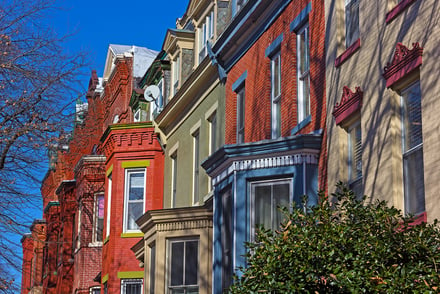 As the homeowner of an old property in or around the nation’s capital, you are also the caretaker of a piece of residential history. As the summer sun starts shining a bit more brightly on Washington, D.C., now is the perfect opportunity to turn your attention to an often overlooked but essential feature on many District properties: retaining walls. These sturdy structures do more than add visual interest to your landscape; they play a crucial role in preserving the integrity and beauty of your gracefully aging home.
As the homeowner of an old property in or around the nation’s capital, you are also the caretaker of a piece of residential history. As the summer sun starts shining a bit more brightly on Washington, D.C., now is the perfect opportunity to turn your attention to an often overlooked but essential feature on many District properties: retaining walls. These sturdy structures do more than add visual interest to your landscape; they play a crucial role in preserving the integrity and beauty of your gracefully aging home.
Why Retaining Walls Matter in the District
Washington, D.C. has a unique blend of rolling hills and historic architecture, and retaining walls are a common sight. They serve a few vital functions:
- Structural Support: They provide crucial support for slopes and uneven terrain, ensuring the stability of your property's foundation.
- Erosion Control: Retaining walls hold back soil, preventing it from washing away during heavy rains and protecting your landscape from damage.
- Enhanced Aesthetics: Retaining walls can add visual appeal and create usable space in your yard, transforming steep slopes into terraced gardens or level patios.
The Aging Challenges of Historic Retaining Walls
Time takes its toll on everything. Historic homes in DC often have retaining walls that have been able to stand the test of time over many decades, but even the most well-built structures will eventually show signs of wear and tear.
Some common signs that an aging retaining wall needs attention include:
- Cracks and Bulges: These can indicate underlying structural problems that need immediate attention.
- Leaning or Tilting: Only one historic structure is supposed to lean, and it's in Italy. If your retaining walls are doing their best Tower of Pisa impression, it could be a sign of soil erosion or foundation settlement, both of which require professional assessment.
- Drainage Problems: Poor drainage can lead to water buildup behind the wall, causing it to weaken and eventually fail.

Why Choose a Specialist for Your Historic Home
Repairing or replacing a retaining wall is not a DIY-friendly job. Historic structures require a deep understanding of construction methods such as tuckpointing, and materials that were commonly used centuries ago, which is why these projects always require professional expertise. A specialist in restoration and preservation will take the steps necessary to seamlessly blend new repairs with historic charm.
- Assess the Wall's Condition: First things first, a qualified expert will conduct a thorough inspection. This allows them to identify underlying issues and determine the best way to address them.
- Choose Appropriate Materials: After assessing retaining walls and determining project scope, the right professional for your job should select materials that complement the existing architecture while meeting modern safety standards.
- Employ Proper Techniques: Bringing the best of bygone construction methods and modern innovation together is an essential part of successfully restoring or repairing retaining walls on historic properties.
Your Historic D.C. Home Deserves the Best
At Renaissance Development, we specialize in restoring and preserving historic properties in Washington, D.C. Our team of experts has a deep understanding of the unique challenges that come along with making repairs to historic properties.
Contact us to schedule a consultation and let us help you keep your historic investment safe, beautiful, and structurally sound for generations to come.
Tags:
Historic Preservation, Retaining walls, tuckpointing, historic brick, Historic Brick Home DC, Retaining Walls DC, Brick Retaining Walls, Stone Retaining Walls, Historic Property DC, Historic Home DC, exterior tuckpointingJun 27, 2024 8:30:00 AM

